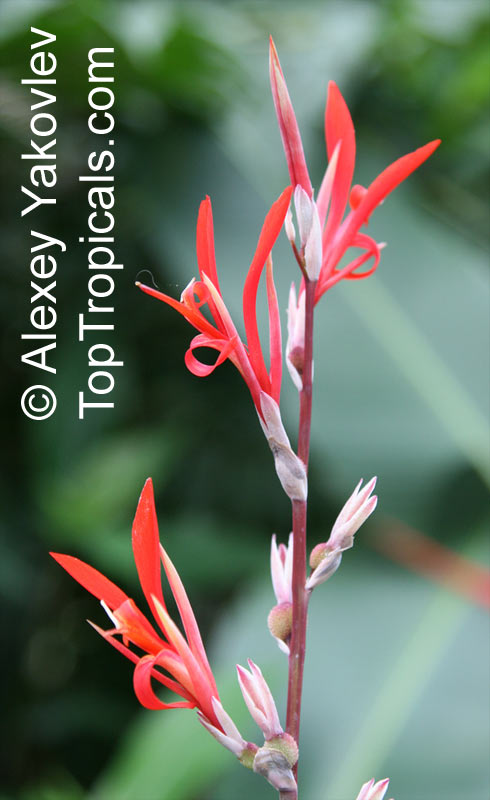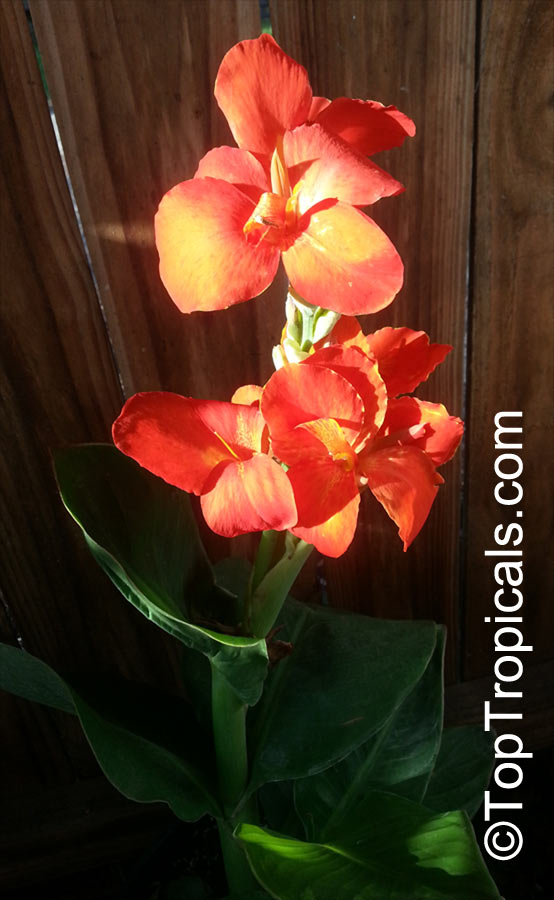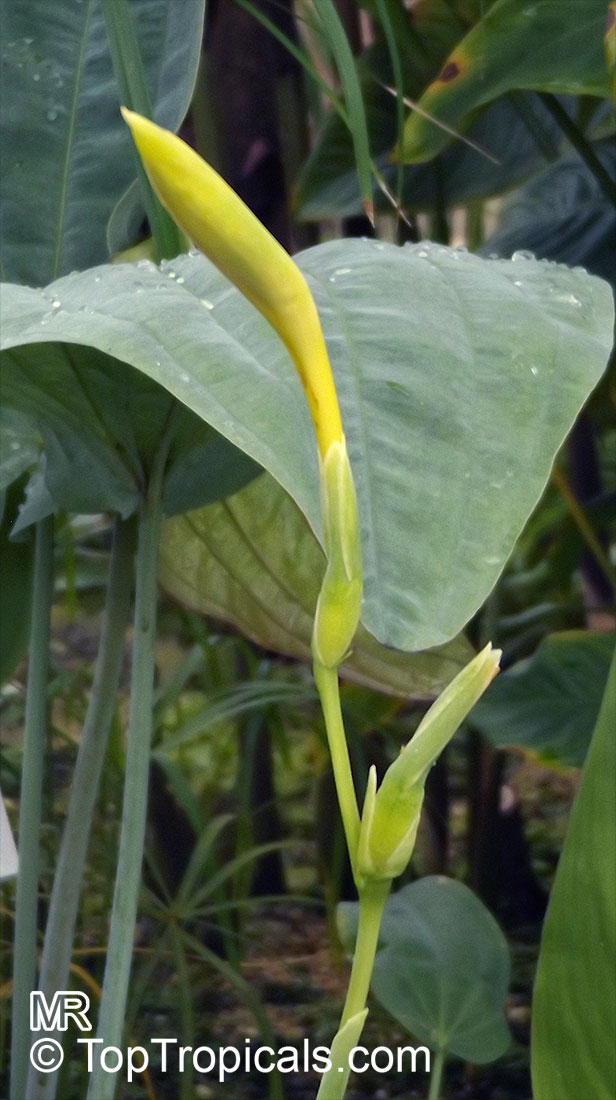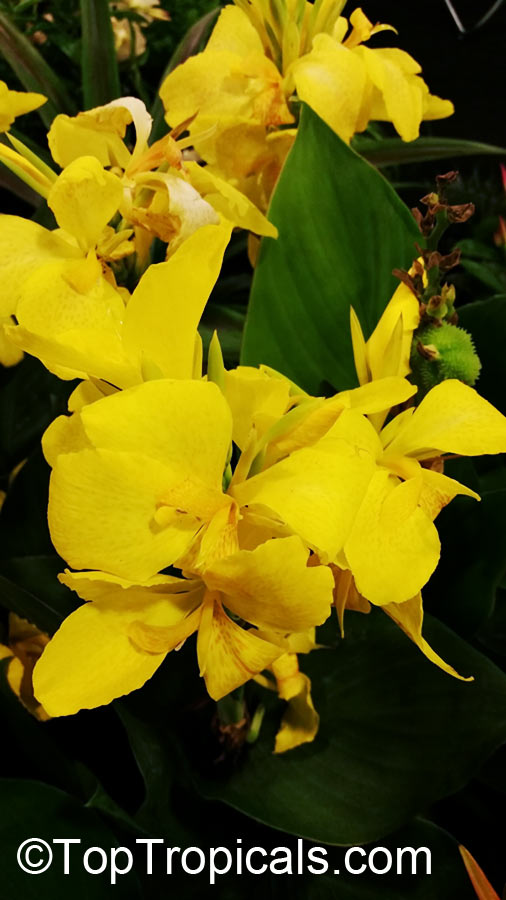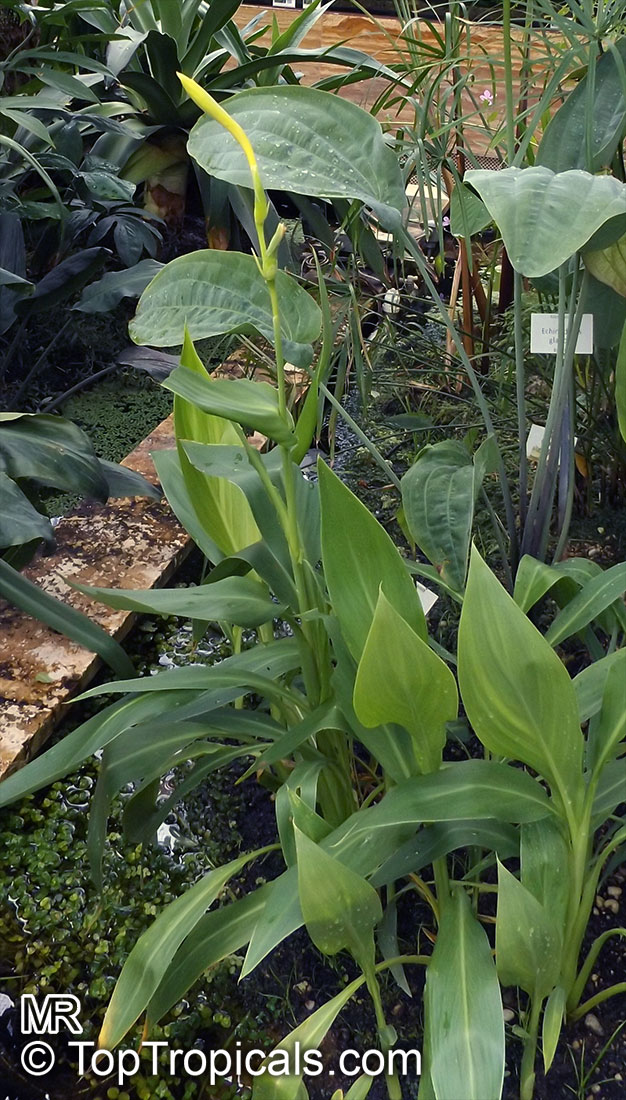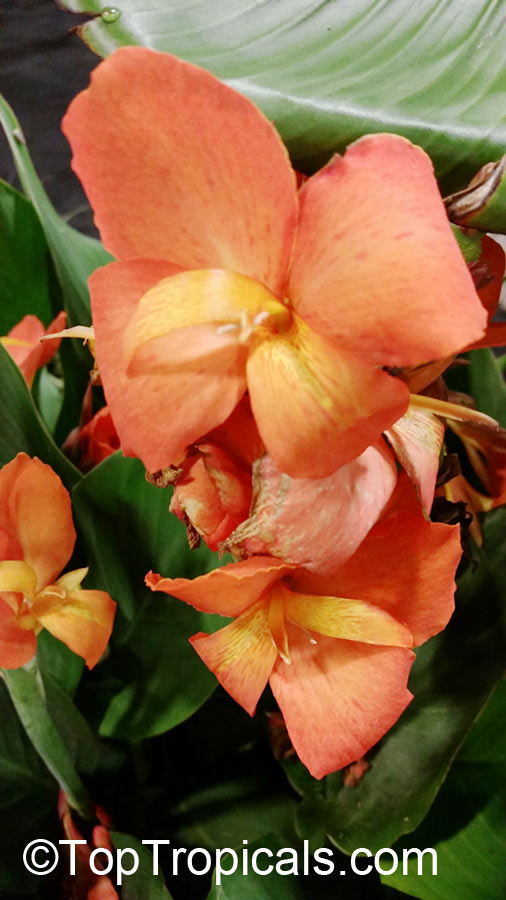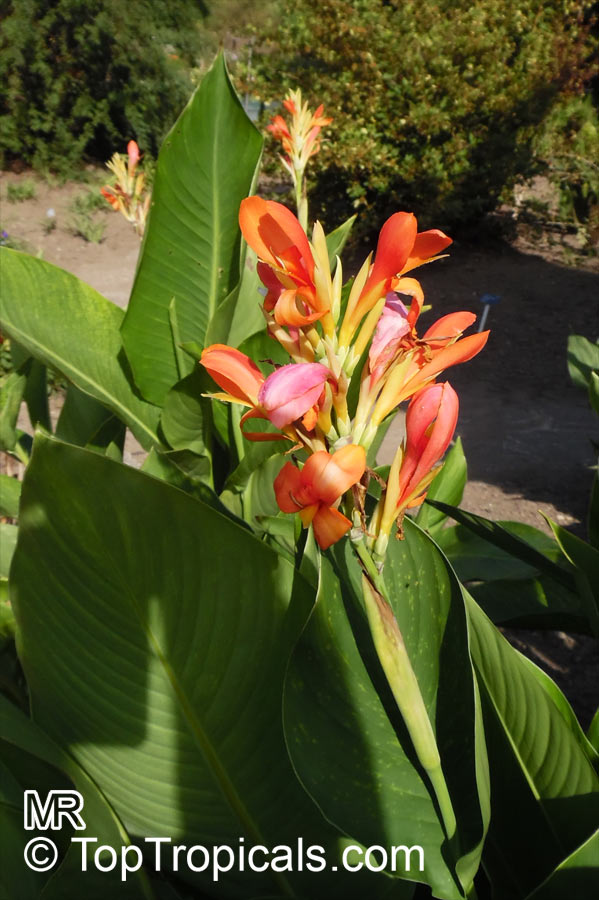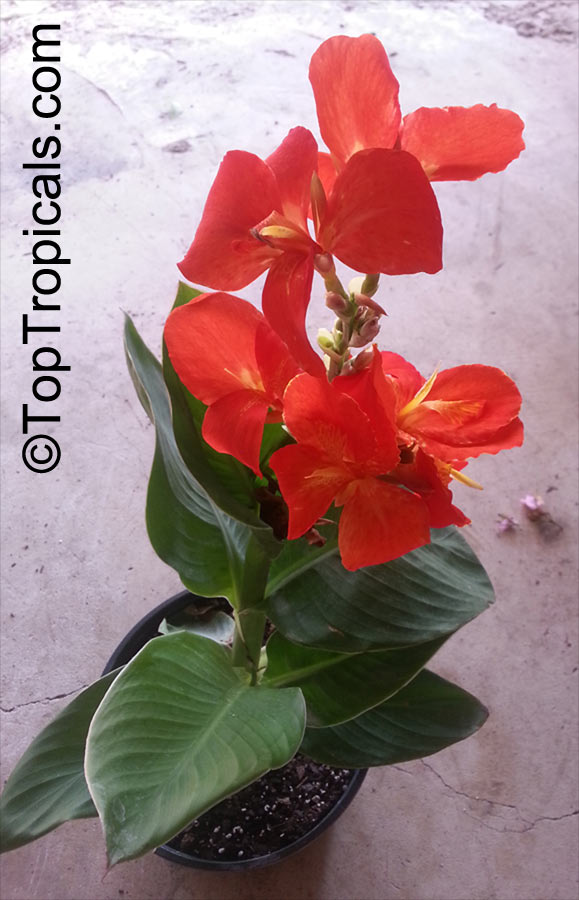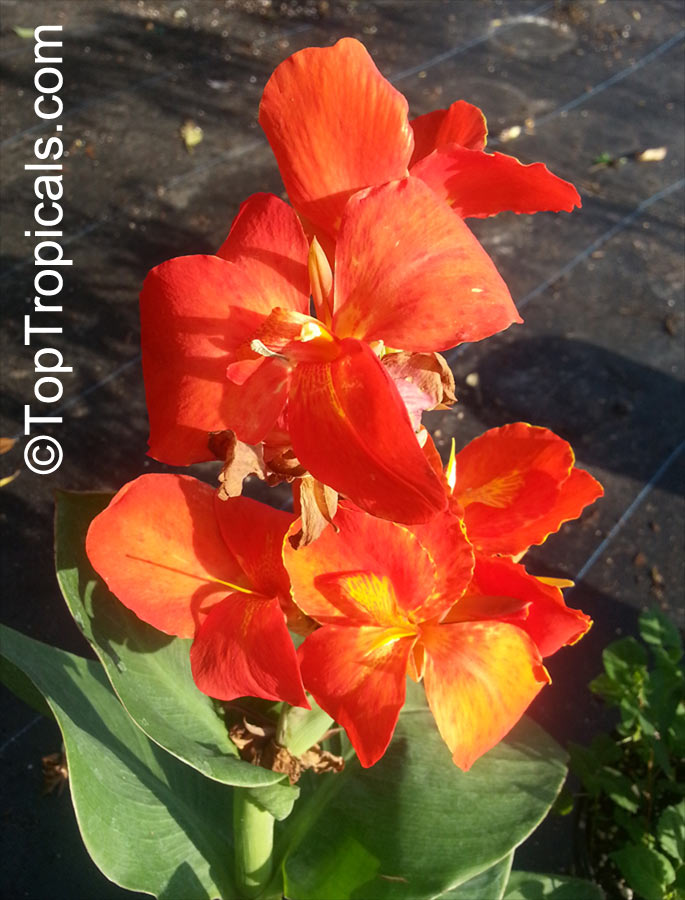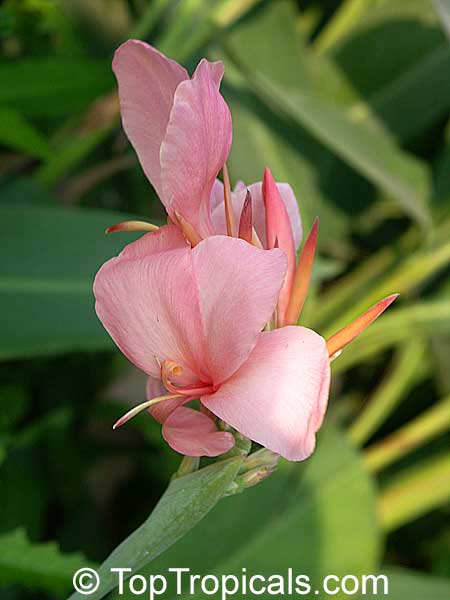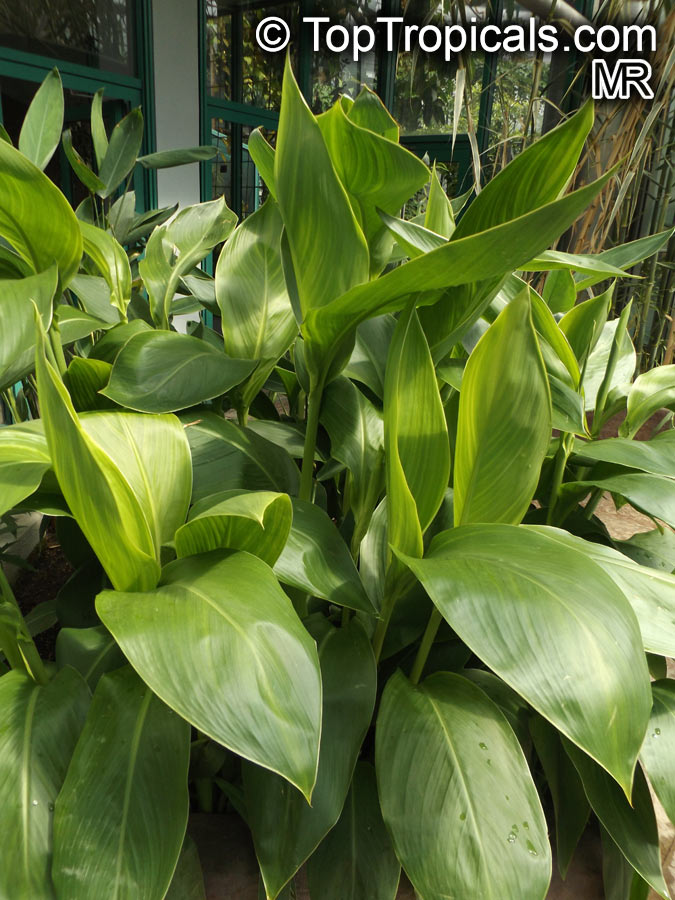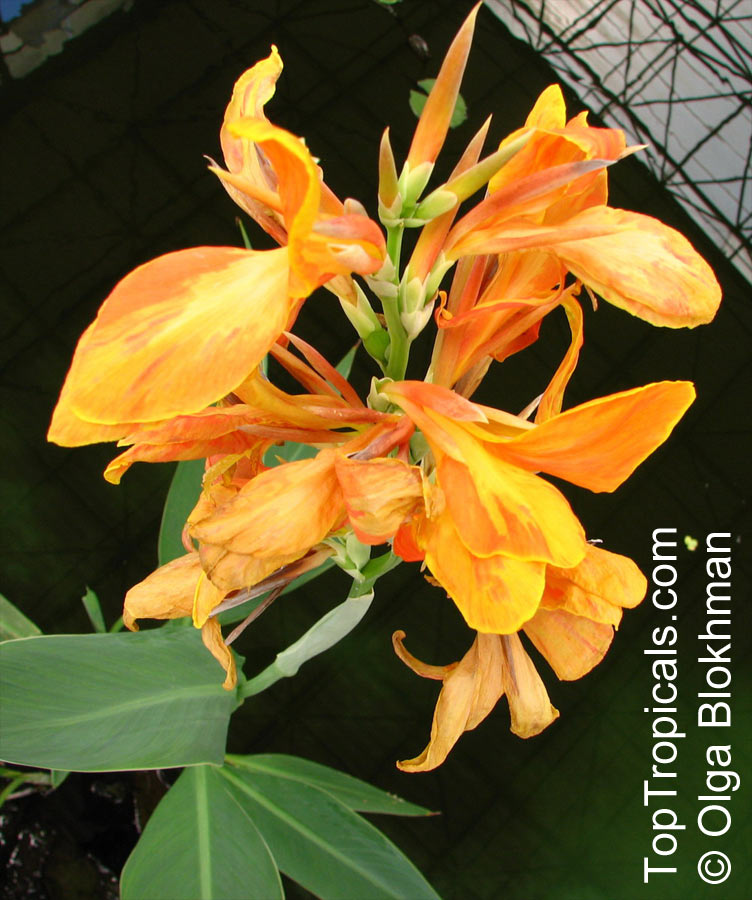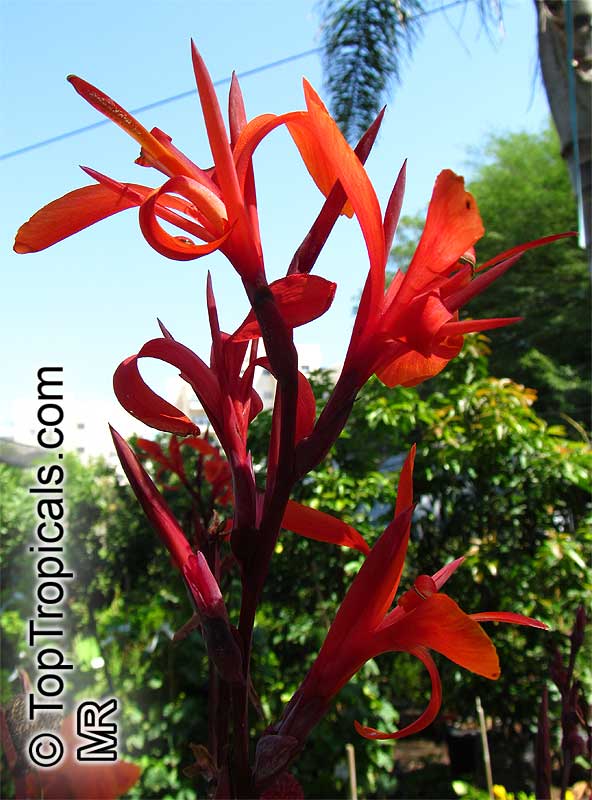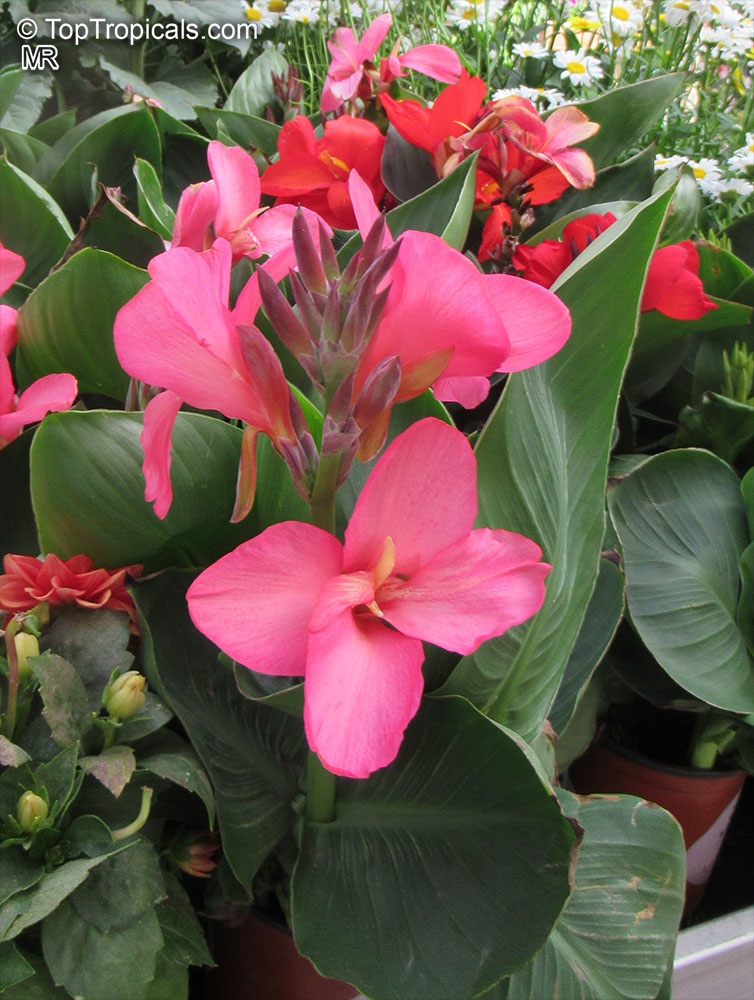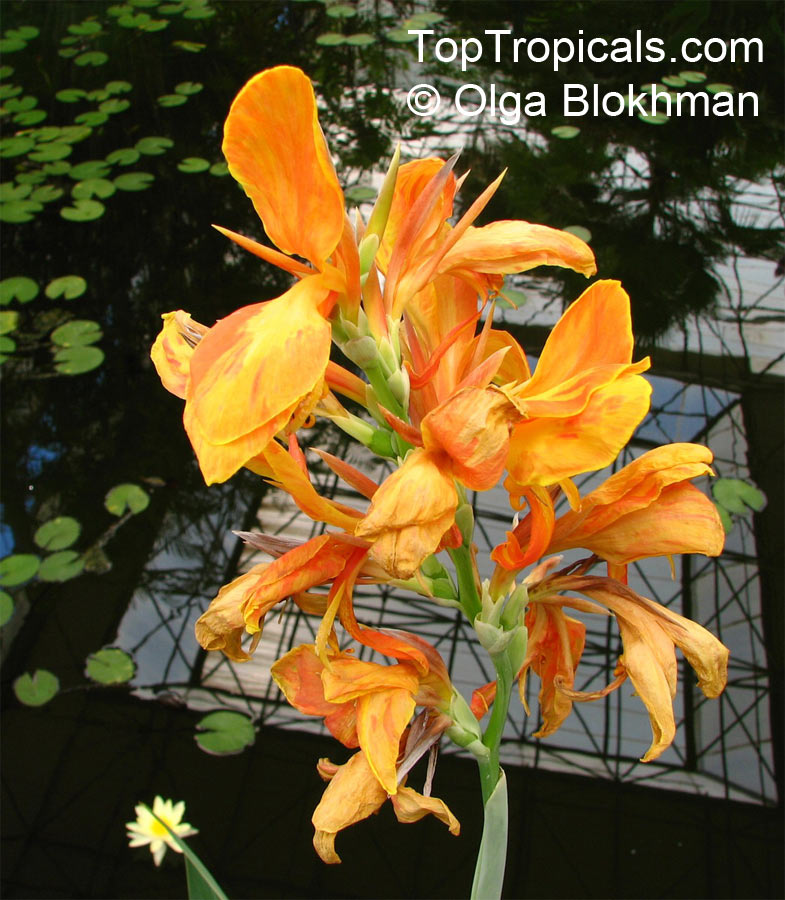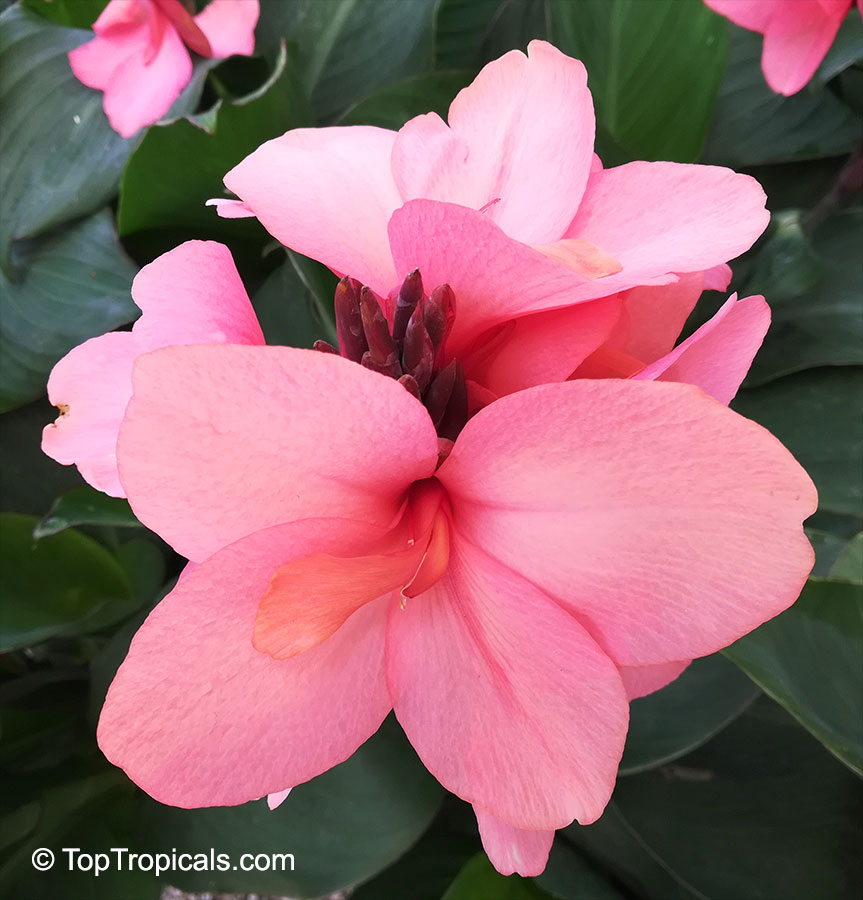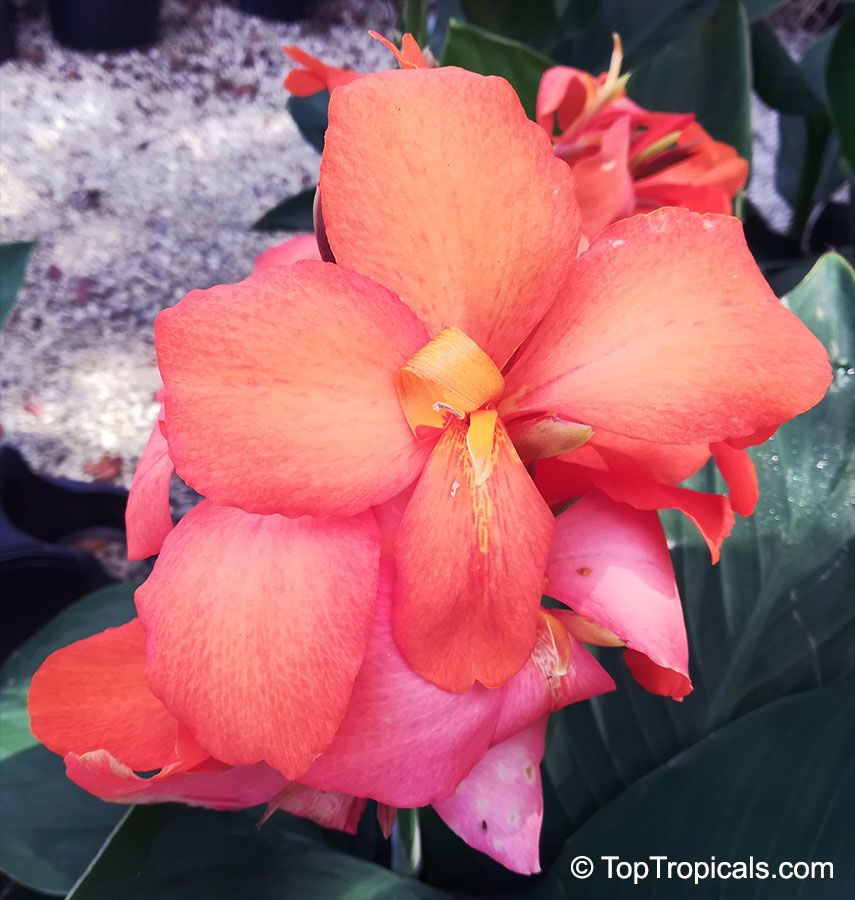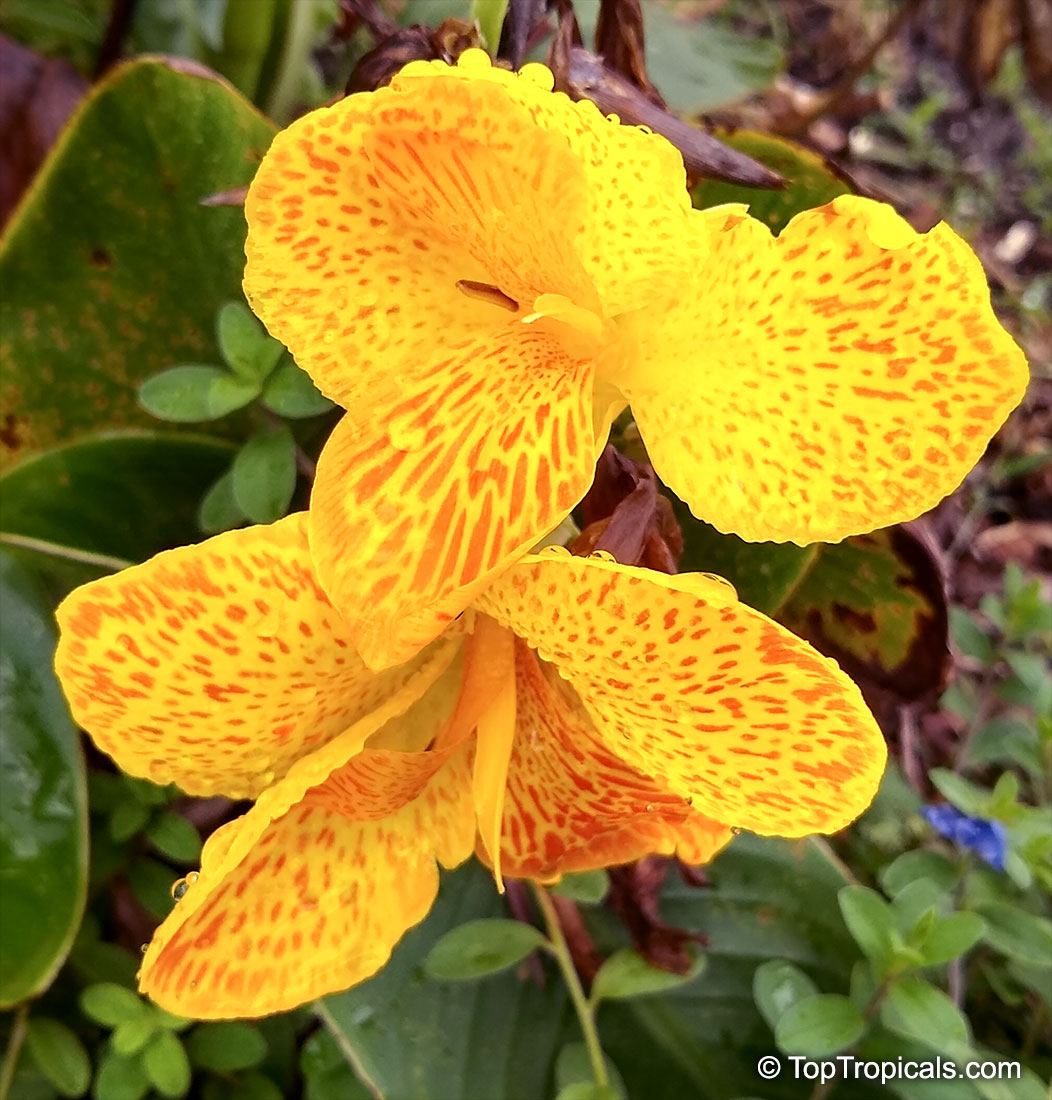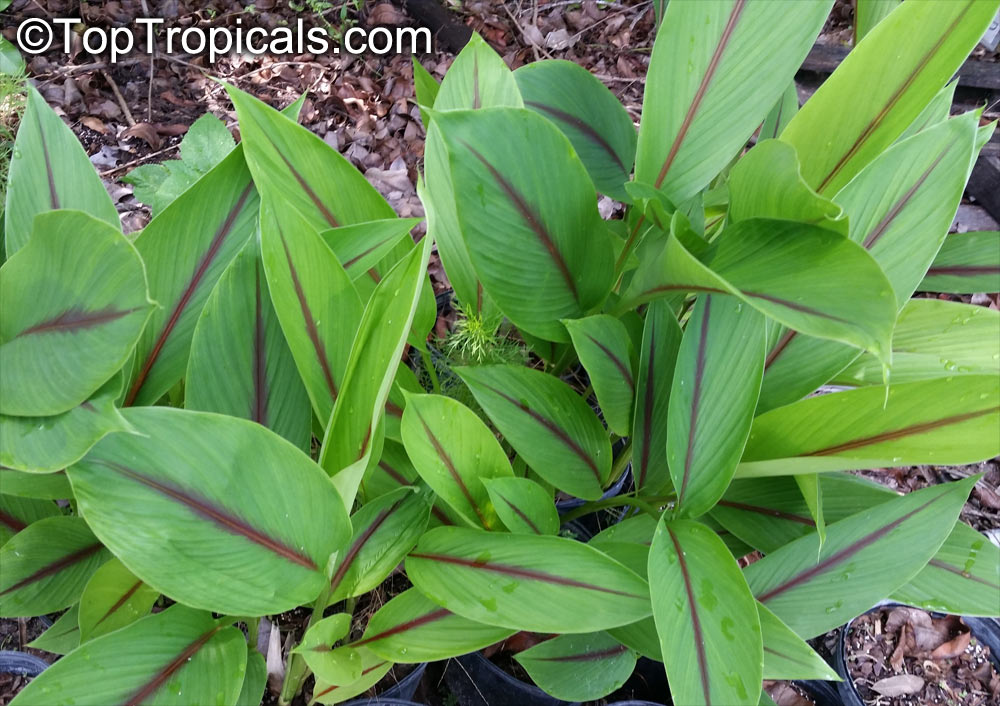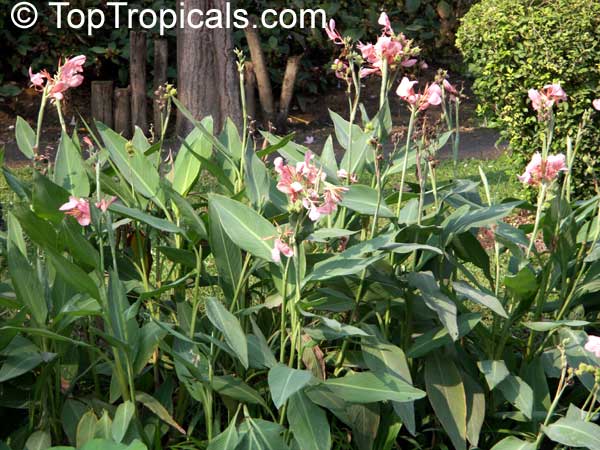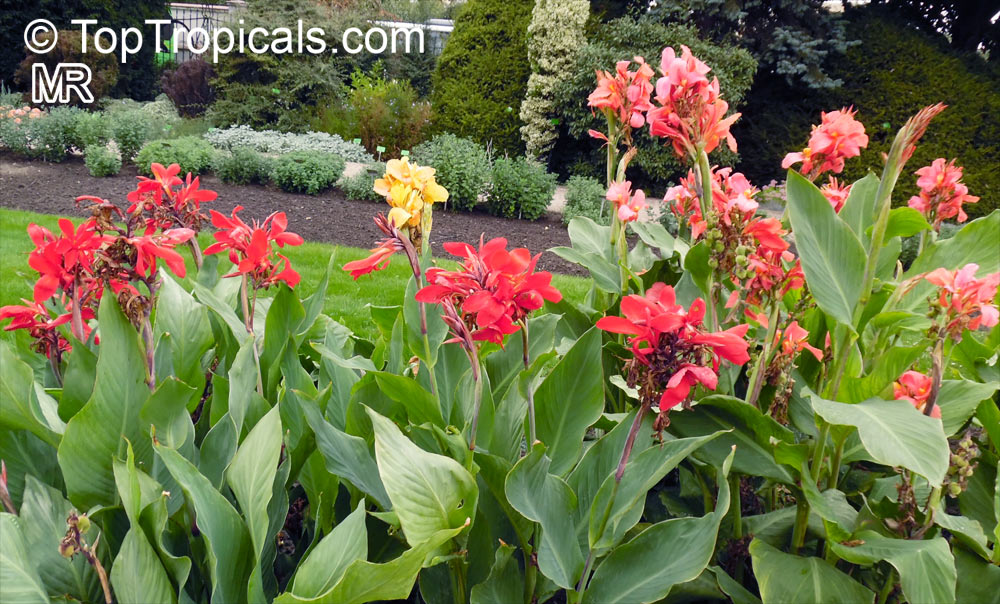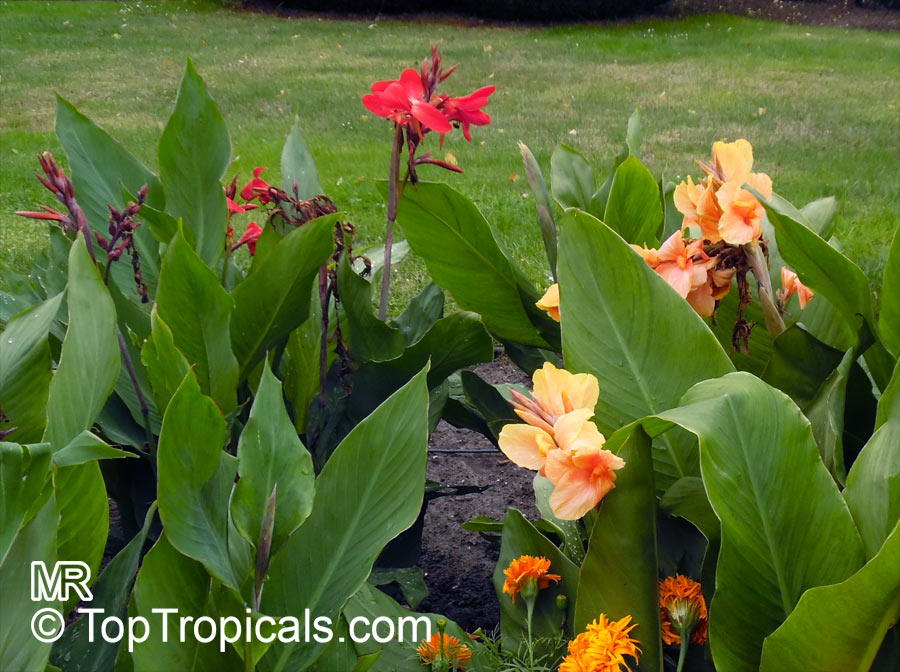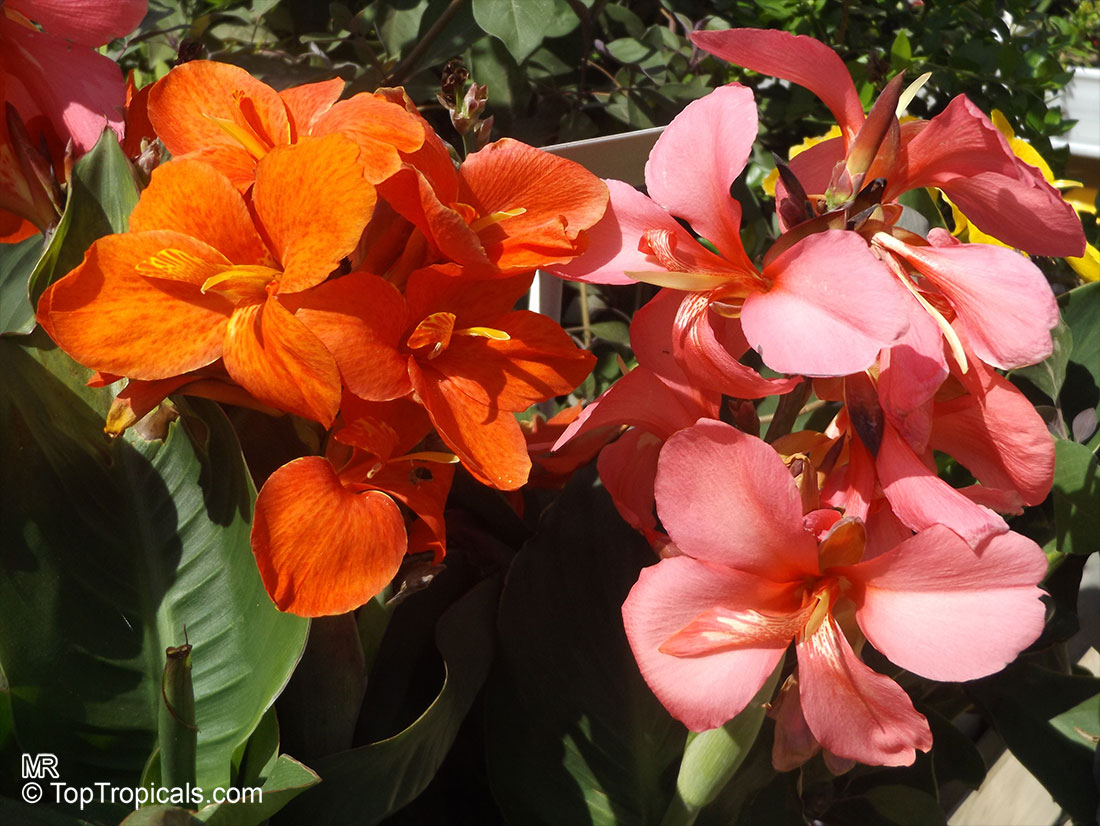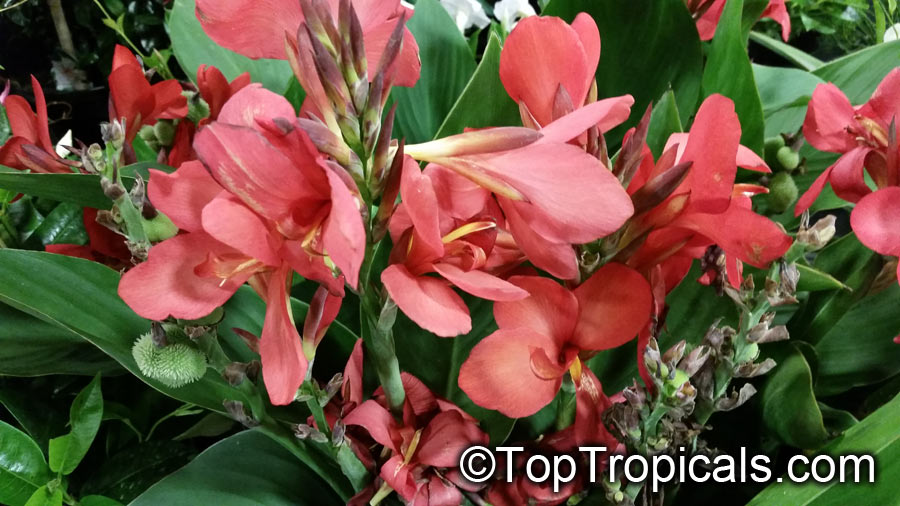Canna sp.
Canna Lily, CannaFamily: Cannaceae














In cold regions where winter temperatures may dip to 20s F, it's best to grow Canna lilies (Canna sp.) in containers to provide a more mild environment. Containers can be moved to a sheltered spot indoors or even in a heated garage. Canna lily flowers come in a range of colors, including pink, red, crimson and vinous. Some varieties also have yellow and orange flowers. Canna lilies can also provide an ornamental foliage. The flowers attract butterflies and hummingbirds. If planted in the garden, Cannas make a beautiful addition to the landscape, and are sure to add a splash of color to any garden. Canna lilies are very low-maintenance plants and they are fairly flood-tolerant.
Cannas need full sun in order to produce profuse flowers. In fact, the more sun the plant receives, the better. These lilies are heavy feeders, so it is important to provide them with plenty of compost or a good liquid fertilizer in order to keep them looking healthy. Without sufficient nutrients and moisture, Cannas may appear unattractive. If your Canna plant appears ratty during the summer, this is a sign that it needs additional food.
Similar plants:
